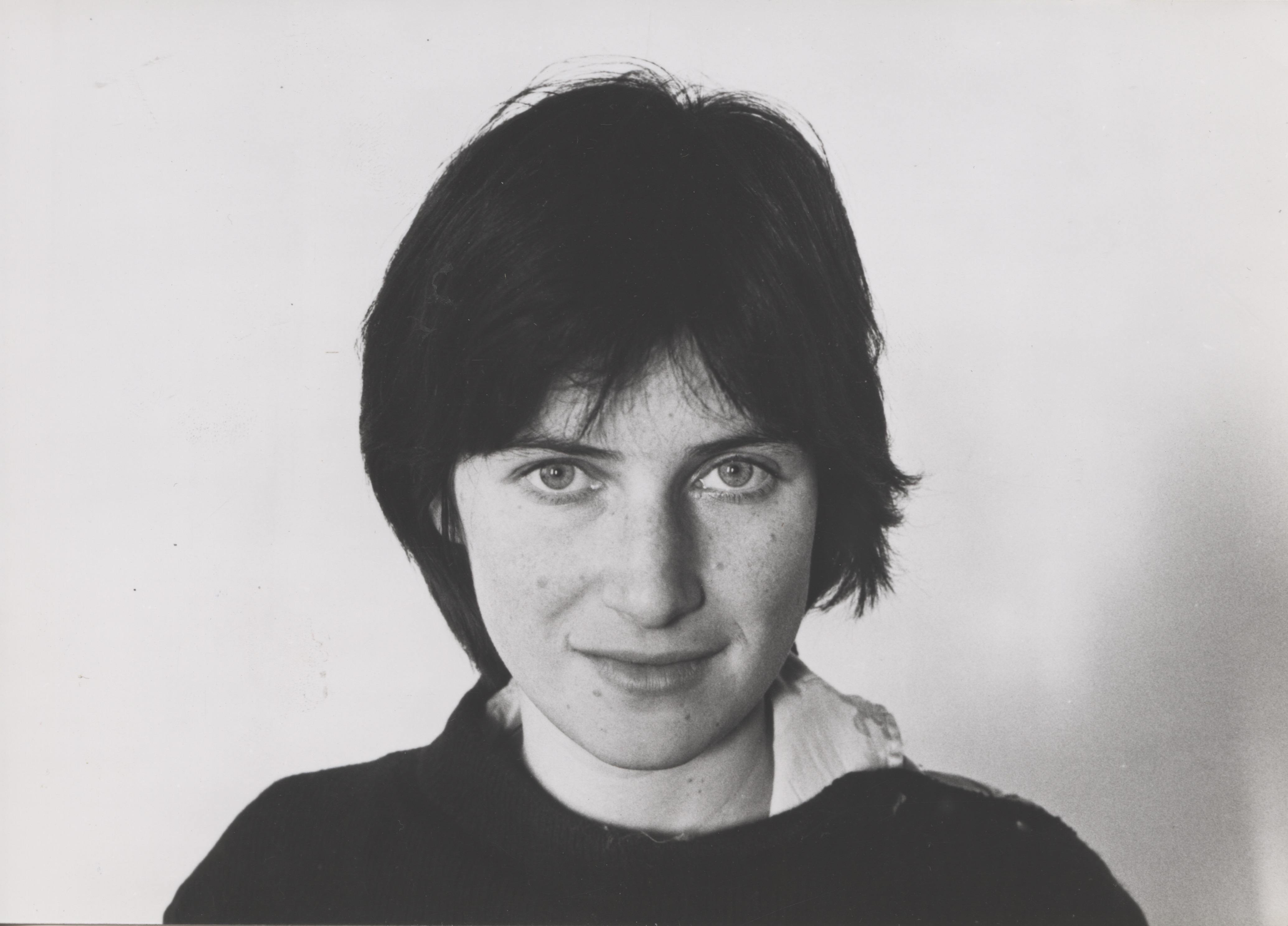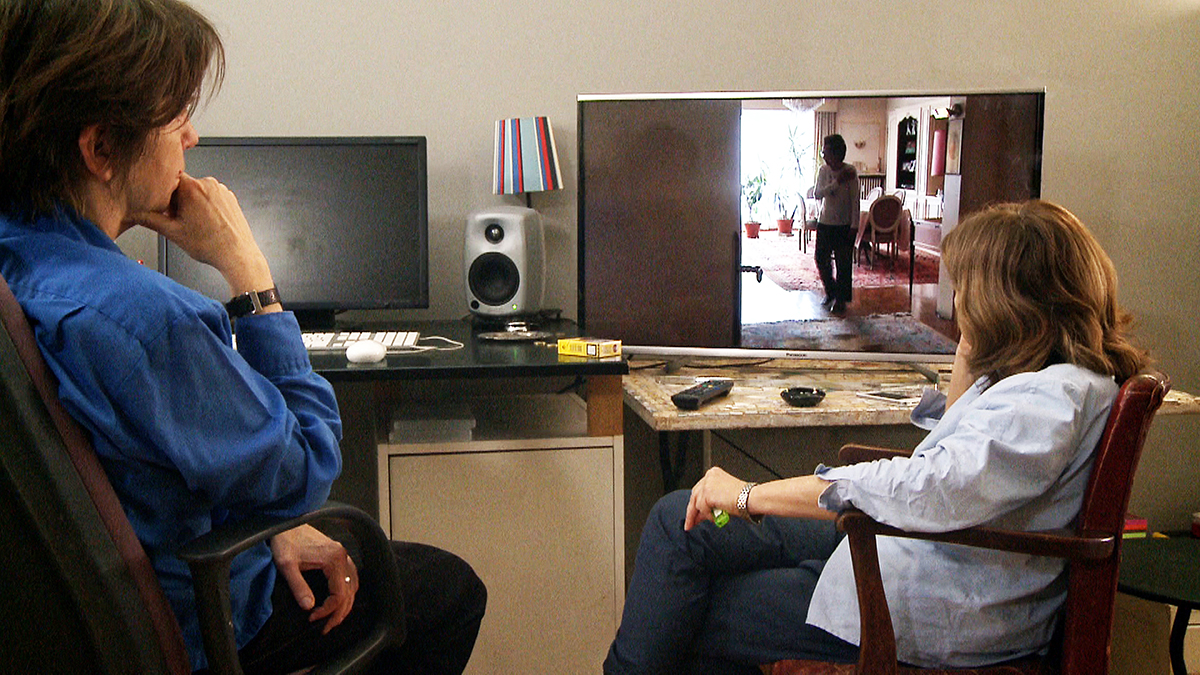Tribute to Chantal Akerman
A text written and read by Claire Atherton during the homage to Chantal Akerman at the Cinémathèque Française on 16 November 2015, before the premiere screening of No Home Movie (2015).

I often imagined the preview screening of No Home Movie. But never like this …
I want to speak to you about Chantal. To tell you everything she gave me, everything she taught me, everything we shared. To tell you how she was: luminous, intelligent, surprising, and funny too …
It is often said of Chantal that she had aesthetic principles. Well, I believe that principles protect us, and Chantal did not protect herself. She trusted what would happen, she knew how to welcome chance.
I am thinking of a story which shed light on her way of working. During the production of La folie Almayer [Almayer’s Folly] (2011), she needed a port. Her assistant asked her if she wanted a large port or a small port. She responded, “a large port”. Then later she was asked if she was really sure that she wanted that, because perhaps a small port would be more convivial. I remember, we were walking in the street, and Chantal was on the telephone. She stopped, stamped her feet and said, “I want a large port, that’s what I said, don’t ask me to explain why”. She did not want to justify her gesture but welcome it, transform it, and perhaps afterwards understand it.
Chantal was very free and intuitive, sometimes provocative. She had no prohibitions. She did not say “we must film like this, we must frame like that, you can’t do this, you can’t do that”. Her choices came from within. She was guided by what she felt. She had more of a physical than cerebral rapport with the image, with colours, with sounds, with rhythm. When editing, I never heard her say: “I have an idea”. She would say rather: “I heard that, or I thought of that, or I want that, or I am obsessed with that”. But it was never: “I have an idea”.
When she was about to make a documentary, she did not want to explain what she would do. If she explained it, she no longer had the desire to make it. She wanted to go on location, and be a sensitive plate, a sponge. She did not want to confine the film to a project but allow it to come to her and let herself be swept through by the material. If Chantal’s images are so profound and strong, if they go beyond what they show, it is because they are not confined to intentions, but are charged with all the concerns, the obsessions, which inhabited her.
This way of working, of “discovering while doing”, was even stronger when making installations. Regarding one such installation project, Chantal wrote: “I had said a lot of things about the installation which followed D’Est [From the East] (1993) before making it, and I understand that, more than a film, an installation for me cannot be described in advance, it is born little by little in through the work itself. Here too, I will say nothing except for the necessity of fragmentation because this demonstrates well that we cannot show everything of a world.”
During the editing of D’Est, we felt that the long tracking shots over the faces of the people waiting, the images of the people walking, referred back to other people waiting or walking, to other queues, to other stories within history, but we did not talk about it. It was only a year later, when we were setting up the installation D’Est au bord de la fiction [From the East: Bordering on Fiction] (1995) that Chantal put the words over the echoes of these images. I will read to you these words from the last paragraph of the text of the 25th screen:
“Yesterday, today and tomorrow, there were, there will be, there are at this very moment people whom history (which no longer even has a capital H), whom history has struck down. People who are waiting there, packed together, to be killed, beaten or starved or who walk without knowing where they are going, in groups or alone. There is nothing to do. It is obsessive, and I am obsessed. Despite the cello, despite cinema.
Once the film was finished, I said to myself, ‘So, that’s what it was. That again.’”
Chantal liked frontal shots. It was not a formal decision but a taste, almost a need. The frontal axis does not describe, does not designate, but creates a space of perception and reflection. That space is also what we worked on during editing. It is a space left to the spectators so that they can experience, feel and search. Chantal insisted that the spectators do their own work. She used to say that she wanted people to feel the passing of time in her films. When someone said, “oh I just saw a great film, I didn’t notice the time passing”, she did not think that was a compliment. She felt that the spectator’s time had been stolen. In editing, we never said, “look, there we need a long shot”. We chose the duration intuitively, and we understood later why. It is as if the shots themselves imposed their duration. Chantal liked to recount how we would hit the table at exactly the same moment to indicate that it was necessary to cut the shot. We saw the same things. I remember one time, after a work in progress screening of the film, one of us said that a certain tracking shot was too long, and the other that it was too short. Chantal concluded: “we agree, this means that there is a problem!” From the moment the film started to exist it rejected certain scenes, so we did not hesitate to subtract, or to shorten. If the film refused a shot, even a beautiful shot, we did not insist. Often, that gave a force to what followed, so the film won. We used to say that in editing it is a game of “loser wins”.
Each film, each installation was like a first time. We had no rules, fears or barriers. Each time we re-entered a new sensory and intellectual adventure. Our exchanges were very simple. We said few words, as if too many words risked ruining something. We often said, “it’s beautiful” or “it’s strong”. We had words that we liked; she said we must be drastic, without concessions. We also said that we were to cut to the quick. I sometimes said to her: “we have to complexify”. She liked this word. She said to me: “Yes, that’s it, complexify a little”. That was when we felt that there was something too overt, too linear. To complexify was not to complicate, it was to add weights and counter-weights, to shape the tension.
Chantal was not looking for verisimilitude nor realism. She was not afraid of anachronisms. She hated naturalism. She never tried to copy reality, nor to represent it; she transformed it. In her films, in her installations the present, the visible are resonant with the invisible, the subterranean. She liked a quote by [Edmond] Jabès: “every interrogation is linked to the gaze”. She said that she did not know if it was true, but that it spoke to her.
Chantal was allergic to psychologism. Psychologism is the psychological explanation of action and feelings. Chantal’s cinema never explains, it questions us and confronts us with ourselves. This is why it is so powerful and alive.
For Chantal, everything was possible. She did not want to confine herself to a precise genre. She never wanted to make elitist or confidential cinema. When she made Un divan à New York [A Couch in New York] (1996), she was hoping to make a commercial film that everyone would go and see. By the way, she always wanted everyone to go and see her films. When I started editing Un divan, Chantal was still filming. I was surprised that there were so many takes per shot. I was not accustomed to that with Chantal; generally, when she felt the take was good, she moved onto another scene. When she returned, she told me why. She said that there was such a financial stake in the film, that she had been asked to do a lot of takes “for coverage”. But she said to me: “this is no longer a cover it’s a pile of comforters!! And I am suffocating under these comforters!”
Yes, Chantal was funny. We forget it sometimes. Funny and free. Out of the ordinary. When we were editing Sud [South] (1999), we edited in the afternoon, and in the morning each of us went about our own business. One day I turned up and she said to me: “what’d you do this morning?” She was asking a lot of these types of small talk questions: What’d you do? What’d you eat ... And I said to her: “I made curtains”. She replied “You made curtains all by yourself? You know, this impresses more than if you’d won the Oscar for best editing!”
To speak to you about No Home Movie, I believe the most pertinent words to be those written by Chantal herself, a few months after the editing was completed. It was in the autumn of 2014.
“It’s been years now that I have started to film all over the place, as soon as I sensed a shot. Without purpose really, but with the feeling that one day these images would make a film or an installation.
I was letting myself go, by desire and by instinct.
Without a script, without a conscious project.
From these images were born three installations which were shown all over the place.
This spring, with Claire Atherton and Clémence Carré, I put together some twenty hours of images and sounds still without knowing where I was going.
And we started to sculpt the material.
These twenty hours became eight, then six, and then after a certain amount of time, two.
And there, we saw, we saw a film and I told myself: of course it is this film that I wanted to make.
Without admitting it to myself.
And, as one says, the red thread of this film is a character, a woman born in Poland, who arrives in Belgium in 1938 to flee the pogroms and the horror. This woman is my mother.
Within and solely within her apartment in Brussels.”

Image (1) from Collections CINEMATEK & Chantal Akerman Foundation | © 1976 Babette Mangolte (All right of reproduction reserved)
Image (2) from I Don't Belong Anywhere: Le cinéma de Chantal Akerman (Marianne Lambert, 2015)
This translation was originally published in “Chantal Akerman, An Intimate Passion”, Senses of Cinema (December 2015).
With thanks to Claire Atherton.

